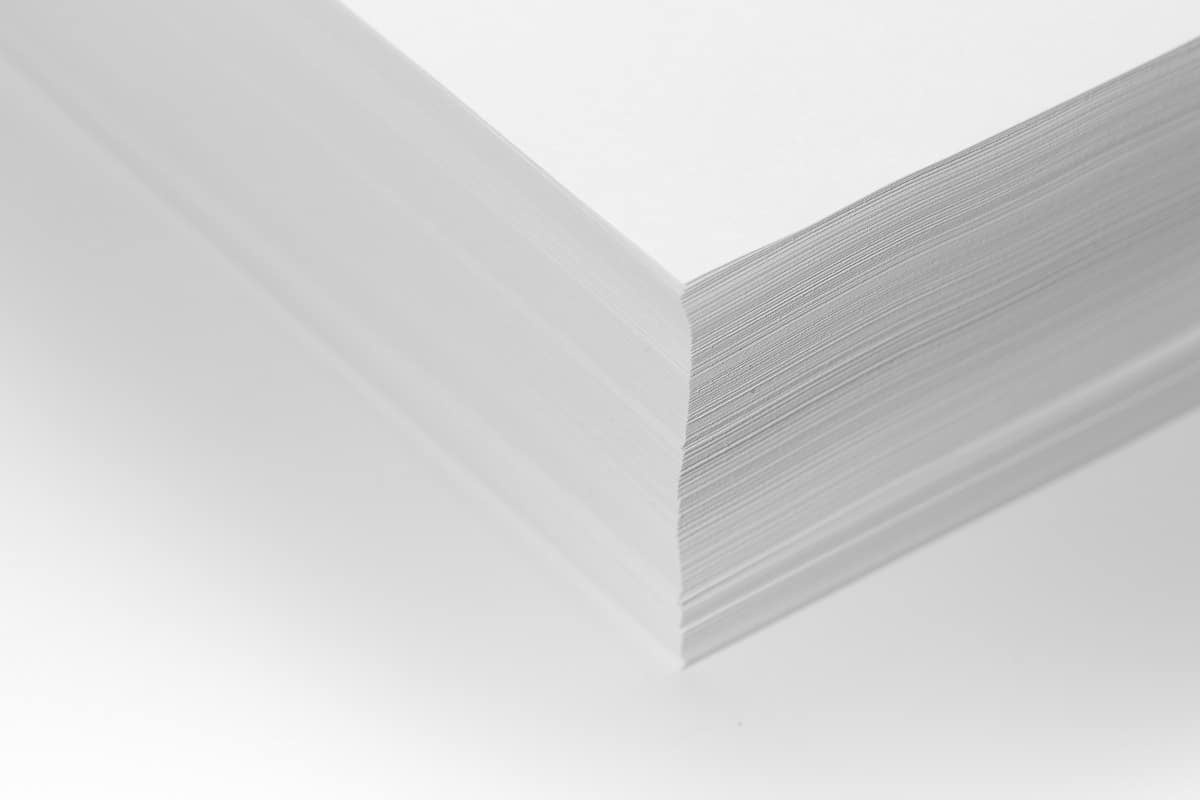The nuanced world of architecture often necessitates specifics, even when it comes to paper dimensions. When pondering the question, “What Paper Size Is 11×17?”, it’s essential to recognize it as the ANSI B paper size used predominantly in North America. With dimensions of 11 inches by 17 inches (or 27.94 cm by 43.18 cm, and 279.4 mm by 431.8 mm), this paper size is pivotal for various professional tasks, including architectural drafts. Dive into the intricacies of the 11×17 paper size with the following sections:
- What Paper Size Is 11×17: A detailed exposition of the 11×17 paper size, elaborating on its dimensions across different units, and its significance in architectural and printing domains.
- Dimensions Of 11×17 Paper: Delve into the exact measurements of this paper size, capturing its dimensions in inches, centimeters, and millimeters, making it easier to gauge its relevance.
- Uses and Advantages Of 11×17 Paper Size: Understanding the primary applications of 11×17 paper in design and printing, and highlighting the benefits it offers over alternative sizes.
- How Is 11×17 Paper Different From Other Paper Sizes?: Contrasting the 11×17 paper with other prevalent paper sizes, accentuating its unique positioning in the architectural and printing landscape.
- Different Paper Sizes: ISO and ANSI: Breaking down the contrast between international (ISO) and North American (ANSI) paper sizing conventions, offering insights into their specific relevance in architecture.
What Paper Size Is 11×17?
If you’re working in a Canadian or an American office, you might already know about 11×17 paper size. If not, then you should know that the 11×17 paper size is just what it says, an 11×17 inches of paper. It is officially known as “ANSI B” paper size under the American National Standards Institute and is closer to ISO A3 size.
It has an area of 187 square inches and depending on the orientation of the paper, it is called a “ledger” or “tabloid” paper size. Besides letter size and legal size, these are also some of the ANSI paper sizes that are included in Cascading Style Sheets (CSS).
This paper size is ideal for drawings, diagrams, and other official purposes because it is just perfect and easy to work around. That’s why architects and engineers use 11×17 when 3-D printing their blueprints, charts, designs, etc.
On that note, recall why engineers use 3-D printers during work. If you have no idea why, remember that it helps them conveniently create effective prototypes on the site. So, if you’ve been planning to get an 11×17 printer, don’t forget to get a 3-D one.
Now coming back to 11×17 sheets, remember that, unlike ISO paper sizes which are prevalent all over the world, the usage of these is restricted to the North American continent and other regions influenced by it.
Dimensions Of 11×17 Paper
Get to know the paper size you work around in great detail by knowing all its important dimensions. We have highlighted all the dimensions ranging from metric to pixelated below.
Dimensions In Metric Units
| Name | Size in cm
(Width x height ) | Size in mm
(Width x height ) | Size in inches
(Width x height ) |
| Tabloid | 27.94 x 43.18 cm | 279.4 x 431.8 mm | 11″ x 17″ |
| Ledger | 43.18 x 27.94 cm | 431.8 x 279.4 mm | 17″ x 11″ |
Dimensions In Pixels
| Name | 72 dpi/ppi
(screen resolution ) | 96 dpi/ppi
(screen resolution) | 300 dpi/ppi
(print resolution ) |
| Tabloid | 792 × 1224 px | 1056 × 1632 px | 3300 × 5100 px |
| Ledger | 1224 × 792 px | 1632 × 1056 px | 5100 × 3300 px |
Note: DPI = Dots Per Inch, PPI = Pixels Per Inch
Uses And Advantages Of 11×17 Paper Size
11×17 size sheets are primarily used for drawings, designs, blueprints, large charts, and other layouts with detailed data. These have a perfect size that is easily printable, cost-effective, and easy to carry, too, as opposed to letter-sized paper or the larger ANSI D paper.
Note that letter-sized sheets can’t be used to make detailed designs or drawings due to their smaller size, but this isn’t the case with 11×17 sheets.
Although American architects use ARCH papers or ANSI D paper to create large commercial designs or blueprints, 11×17 paper sheets can be used to make their scaled-down version. As there’s an issue of folding and ceasing with larger sheets like ANSI D, 11×17 comes in handy for on-site usage.
Moreover, specific details can’t be interpreted when large images are scaled down. This major disadvantage is met by 11×17 sheets as technical drawings made on CAD software can be easily read by using them. So, forget about rolling, creasing, or drafting tables when using 11×17 sheets on the site.
Besides, these can be easily printed on Inkjet or laser printers. While we’re on printers, you should note that laser printers would be more suitable for them as opposed to inkjet printers due to their high speed and cheaper ink.
We’re prone to get questions from curious engineers or architects like, “Why is a laser printer better than an inkjet while getting 11×17 blueprints or layouts?” So, we hope that answers your question if you’ve been wondering about the same.
How Is 11×17 Paper Different From Other Paper Sizes?
If you’re wondering how 11×17 paper differs from other commonly used paper sizes, then we have compared it with letter and other sizes below.
ANSI A
ANSI A, or the letter size, measures 8.5″ × 11.0″ and is closely related to ISO A4. These are the most commonly used paper sizes in offices for printing. However, due to their small size in comparison to Tabloid, they aren’t good enough for detailed data or drawings.
Moreover, if you evenly cut an 11×17 paper in the middle across the longer side, you’ll get two letter size papers as a result. Yet, note that the aspect ratio won’t be the same as it happens in ISO papers.
ANSI D
ANSI D is a larger version of Tabloid size paper and measures 22″ × 34″. As they are quite bigger in size, they are perfect for drawing detailed architectural drawings, though not all printers are suitable for that. In such cases, 11×17 paper sizes are considered ideal with their adequate size, which can fit in laser and inkjet printers alike.
That’s why 11×17 size paper is used to draw scaled-down versions of big architectural drawings. Moreover, the 11×17 is closely related to ANSI D paper, and you’d be amazed to know that cutting the latter evenly gives out four 11×17 papers with the same aspect ratios.
All you have to do is cut evenly in the middle across both longer and shorter sides, and the result would be four 11×17 size papers.
ISO A3
ISO A3 is the close variant of ANSI B size paper, but as they both follow different standards, they have different dimensions. It measures 11.69″ × 16.54″, unlike Tabloid’s 11″ × 17″. So, even if the difference might seem small, it isn’t, and you shouldn’t confuse the two.
Different Paper Sizes: ISO And ANSI
There are various kinds of paper sizes available in the market ranging from letter to legal to tabloid. But they are mostly the same for a novice or a regular school student who isn’t well-versed in paper measurement standards and their specific uses.
Even if, for you, ISO A4 might act as a standard letter format, you’d be surprised our American audience doesn’t share the same beliefs as they follow different paper standards. While ISO 216 standard is the international paper size, they aren’t followed in America or Canada, where ANSI (or American National Standards Institute) standards are followed.
If you don’t know how ISO differs from ANSI, then you should know that the difference is in aspect ratios. Unlike ISO paper size, which has a single 1:√2 aspect ratio, ANSI has two aspect ratios of 1:1.2941 and 1:1.5455, whereby reduction and enlargement of sizes become tough in the case of ANSI.
Moreover, ANSI is relatively new and was introduced way later than ISO and follows a standardized 8.5″ x 11″ letter format known as “ANSI A.” Other larger sizes are ANSI B, C, D, and E. Although these sizes aren’t the same as ISO ones, one can find a close variant between the two.
Look at the table below to get a clear picture of ANSI and ISO paper sizes and their closest variants.
| ANSI Sizes | Width x Height (in) | Width x Height (mm) | Closest ISO |
| A | 8.5 x 11.0 in | 216 x 279 mm | A4 |
| B | 11.0 x 17.0 in | 279 x 432 mm | A3 |
| C | 17.0 x 22.0 in | 432 x 559 mm | A2 |
| D | 22.0 x 34.0 in | 559 x 864 mm | A1 |
| E | 34.0 x 44.0 in | 864 x 1118 mm | A0 |
What is an 11×17 paper called?
11×17 papers are officially known as ANSI B papers. However, they’re commonly called “Tabloids” or “ledgers,” depending on their orientation.
Is 11×17 paper the same as A3 paper?
No, 11×17 paper isn’t the same as ISO A3 paper and is just a close variant of it. While the size of 11×17 paper is the same in inches, this isn’t the case with A3 paper. They both follow different standards and as such, you shouldn’t confuse the two.
What’s the size of Tabloid paper?
The Tabloid paper measures 11×17 inches and has an area of 187 square inches.
Do architects use 11×17 paper?
American architects use ARCH papers. However, they also use 11×17 papers for scaled-down versions of their larger designs. They have enough space to accommodate detailed data that can’t be printed on letter-sized sheets.

Papers come in different sizes, serve different purposes and their importance can’t be narrowed down enough, especially for architects. The standard paper doesn’t cut out for them, and even though large ANSI D size sheets are perfect for commercial designs, they aren’t convenient on-site.
In that case, 11×17 comes as their knight in shining armor with their adequate size, which is absolutely ideal for designs and printing detailed data.
That was all about our brief guide on 11×17 paper and their usage. We hope you were able to understand them better after reading this guide.
After sorting out 11×17 size paper you might want to sit down on your precious bean bag chair. But, the new refill is not comfortable and kills you to sit on it. You need a new refill, but you don’t know what to put into it other than the already-refilled material.


